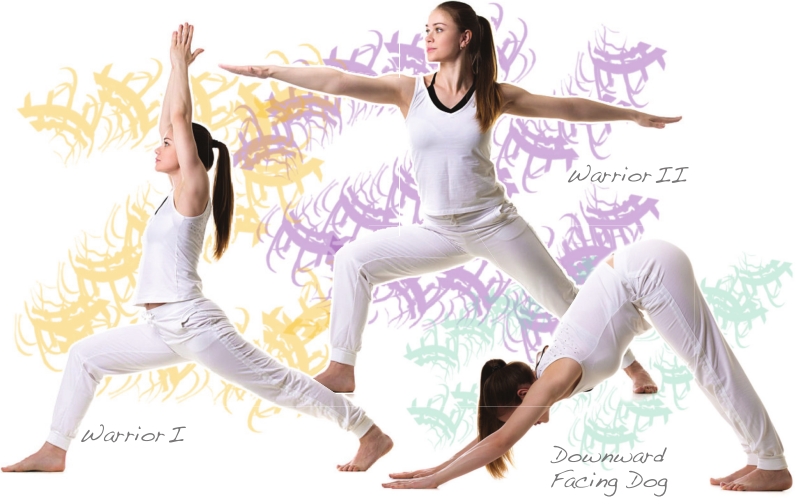YOGA EXERCISE

Technique has relatively low risks
Yoga combines stretching the body and relaxing the mind for a tranquil, meditative form of exercise.
Originating in ancient Indian philosophy, modern yoga continues a regimen of breathing techniques, poses and postures.
“Yoga helps with flexibility balance and posture more than other forms of exercise, as well as overall relaxation and stress relief,” said Elizabeth Winkler, a certified yoga instructor who teaches at Willis- Knighton Fitness and Wellness Center.
Yoga has relatively low risks for healthy individuals as a low-impact form of exercise. The risk of serious injury from yoga is low.
In addition to increasing flexibility, lowering stress and improving posture, yoga also helps strengthen muscles and bones, increases blood flow and supports connective tissue. Yoga can help people with chronic health conditions, such as arthritis, back pain, fibromyalgia and carpal tunnel syndrome by reducing pain. According to a National Institutes of Healthfunded study of 90 individuals with chronic low back pain, participants who practiced yoga had significantly less disability, pain and depression after six months. 
Yoga has also been shown to help reduce blood pressure and other cardiovascular risk factors and relieve anxiety and depression, Winkler said. Two studies in The Lancet, a British medical journal, studied individuals with hypertension. The participants practiced savasana, also known as “corpse pose.” After three months of practicing the pose, individuals’ blood pressure improved.
As far as mental health, meditating has been shown to heighten the prefrontal cortex of the brain, according to a study at the University of Wisconsin. This heightened activity correlates with higher levels of happiness and improved immune function.
Winkler said that if you have a medical condition, it’s important to talk with your doctor about starting yoga. Some conditions, including high blood pressure, glaucoma and pregnancy require modifications. Make sure to keep your instructor informed of any medical conditions you have so they can best help you.
“Everyone’s body is different, and yoga postures should be modified based on individual abilities,” she said. If you’re just beginning yoga, Winkler said it’s important to follow your instructor’s modifications for beginners.
“Slowly work your way into harder variations of poses and pay attention to how your body feels throughout practice. Do not force yourself into any pose,” she said.
Yoga Poses for Beginners:
Mountain Pose: This is the foundational pose for standing yoga positions.
Downward Facing Dog: This pose strengthens legs and arms while stretching hands, shoulders, hamstrings and arches of the foot.
Child’s Pose: Also known as “child’s resting pose,” this stretches hips, thighs and ankles.
Warrior I: This standing pose stretches the back, shoulders, arms, thighs and ankles.
Warrior II: Warrior II is also a standing pose, stretching legs, shoulders, thorax, ankles, groins and lungs.
Triangle: This standing pose tones legs, reduces stress and increases stability.
Tree Pose: Tree Pose strengthens thighs, vertebral column and ankles.
Seated Forward Fold: This seated pose was advocated by the 11th century yogi Gorakshanath.
Pigeon: Pigeon stretches thighs, thorax, abdomen, ankles, groin, throat and the front of the body.
Yoga can serve as an exercise alternative for those who struggle with or do not enjoy cardio or running or a component of a varied fitness plan.
– Tara Bullock
